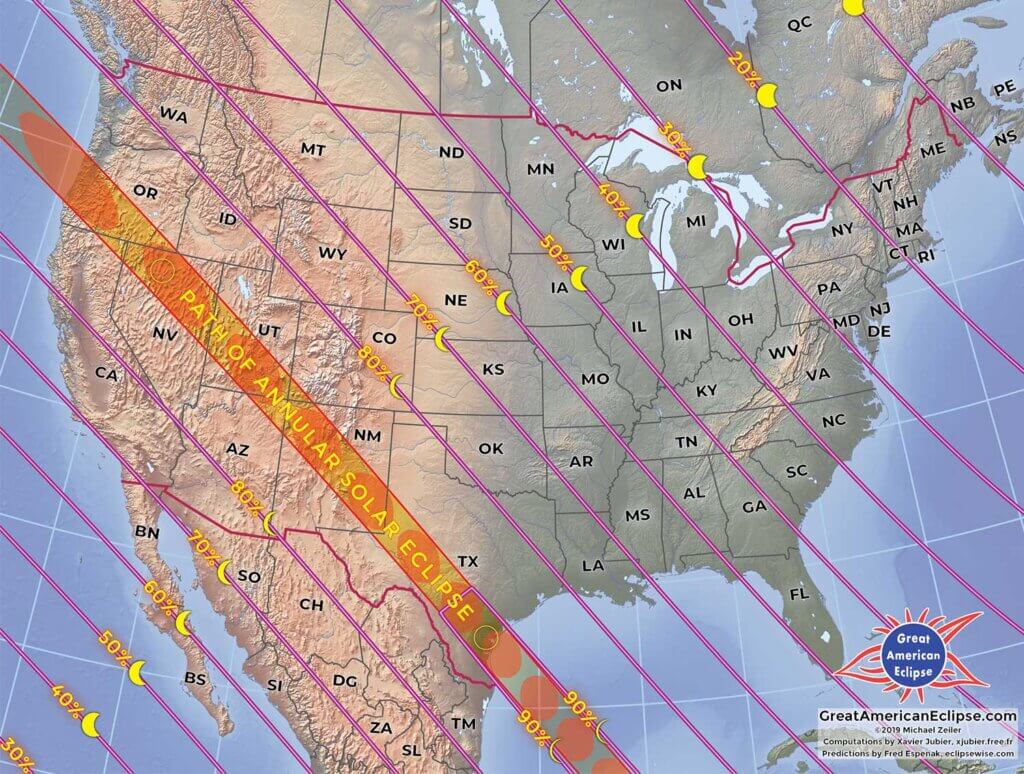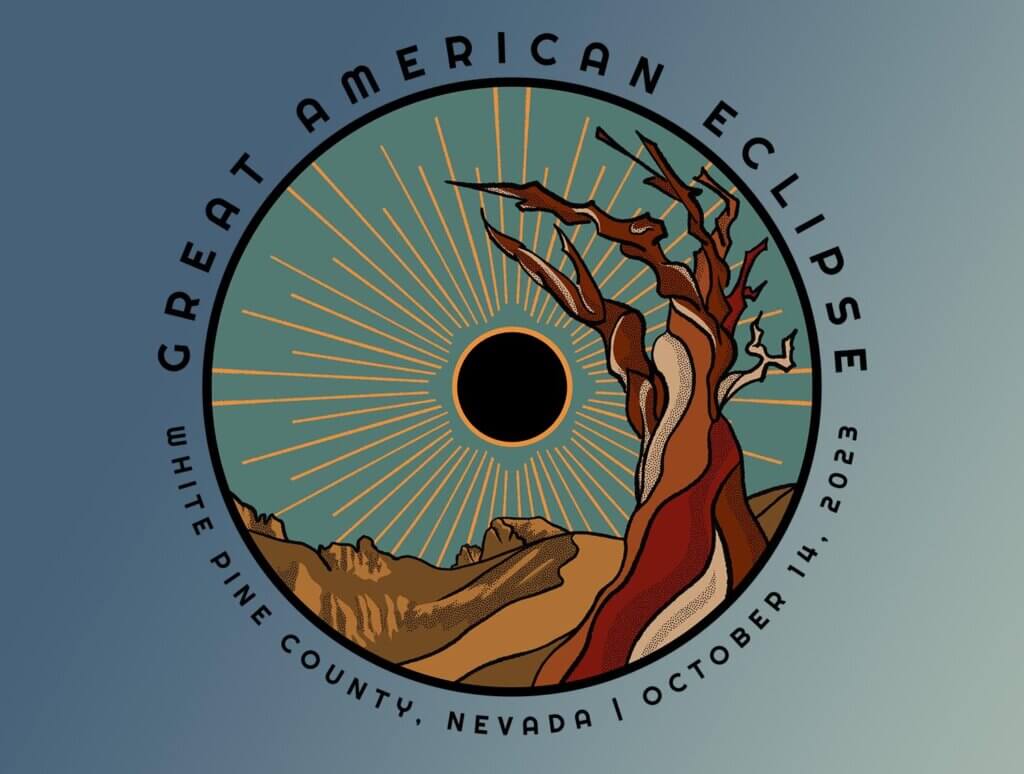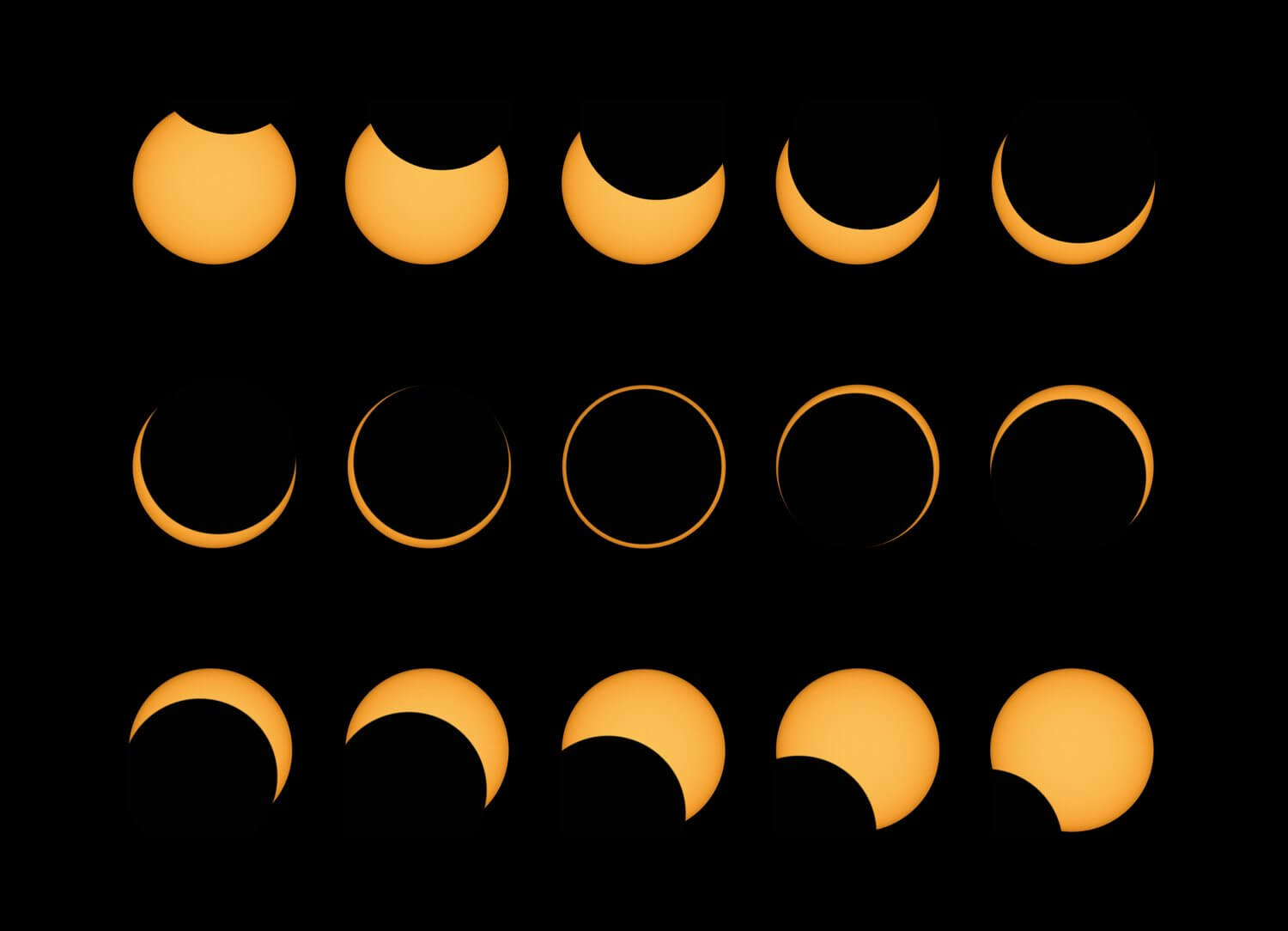
Images Courtesy of GreatAmericanEclipse.com
Images Courtesy of GreatAmericanEclipse.com
Ring of Fire Eclipse Watch
Get out those calendars all you sky lovers, because Nevada is about to have a front-row seat to an otherworldly sight that hasn’t been seen in 11 years, and won’t be seen again until June 21, 2039! On Saturday, Oct. 14, 2023, an annular solar eclipse will happen, and its peak obscuration will be visible across a large swath of the state.
While the Silver State is already renowned for its dark skies, with internationally recognized areas that reveal the cosmos to the naked eye, this eclipse will happen during the day. And thanks to the path of the coming event, you can view the eclipse when it is at 90 percent of its peak from a number of towns in Nevada.
Beat a path to Nevada for the best seats to this otherworldly event!
Learn about the eclipse, where to view it, and how to stay safe.

What’s the Deal?
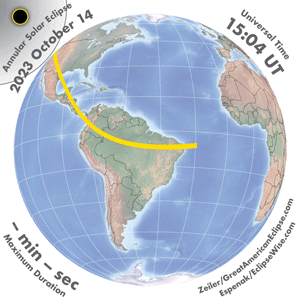
An annular solar eclipse is not the same as a total eclipse. An annular solar eclipse is known for the “ring of fire” phenomena that occurs. This happens when the apparent size of the moon is slightly smaller than the apparent size of the sun, and when the moon crosses into the sun’s path, a brilliant ring of light is created.
An annular solar eclipse is known for the “ring of fire” phenomena that occurs.
The event will be visible across a large swath of the state, and the event will appear within about a 2.5 hour time frame. For instance, in Battle Mountain, viewing will take place from about 8:06 a.m. to 10:48 a.m., with the maximum obscuration (where the sun is almost completely covered) occurring at about 9:23 a.m.
At Great Basin National Park, it will start at 8:07 a.m. and go through 10:53 a.m., with the maximum obscuration at 9:24 a.m. The entire duration of the maximum annularity is just over 4 minutes, so planning ahead for your best viewing location is crucial! Luckily, we have you covered.
Getting a good seat to the eclipse won’t be hard thanks to the large swath it will cover in Nevada. From the eastern edge in the middle of the state to the top northwest corner, there are many great places to see the show.
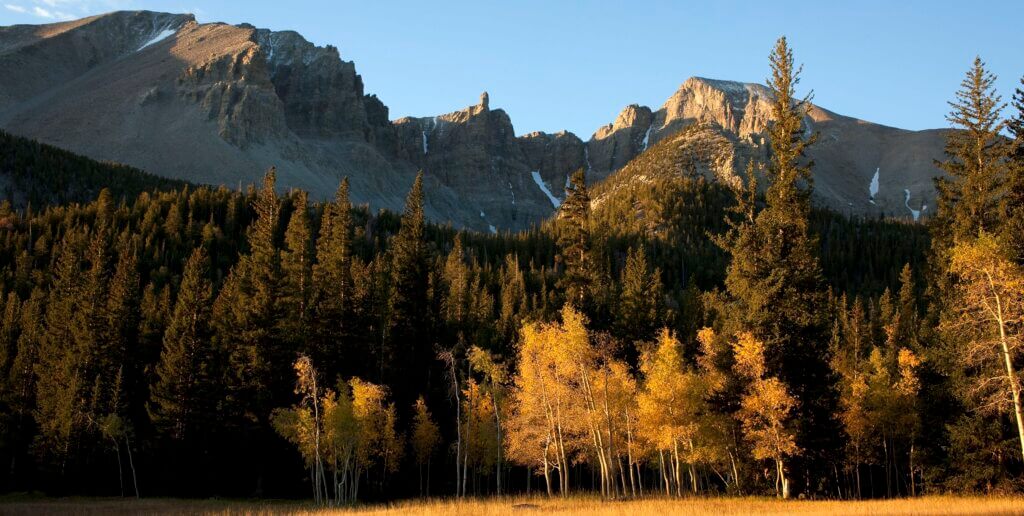
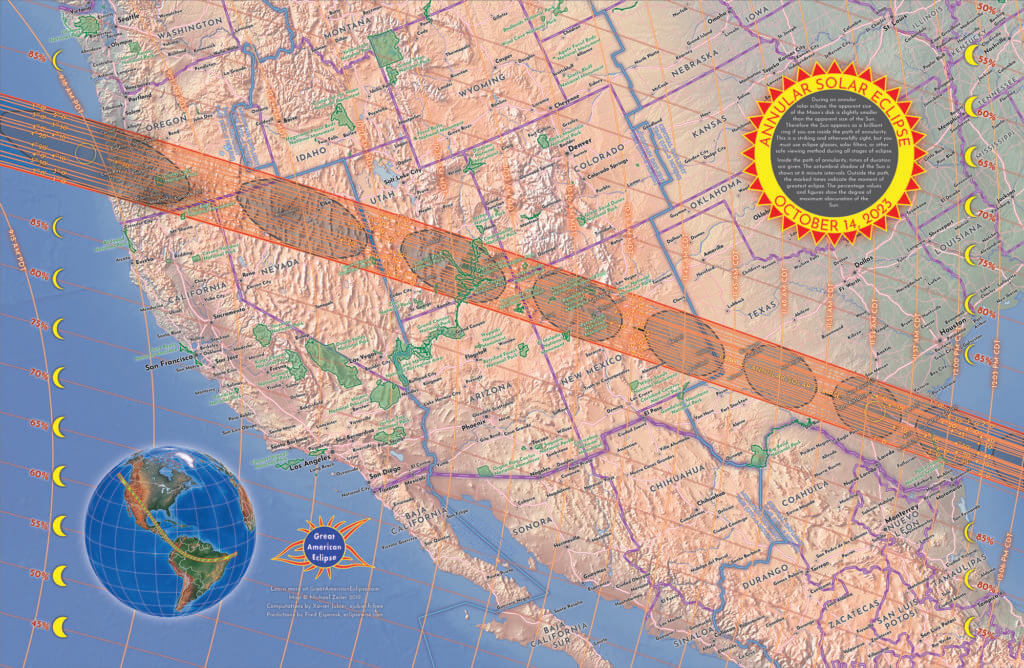
Where to view the eclipse?
Getting a good seat to the eclipse won’t be hard thanks to the large swath it will cover in Nevada. From the eastern edge in the middle of the state to the top northwest corner, there are many great places to see the show.
Keep reading to see our favorites!
Along Highway 50
Cities for viewing along Highway 50:
- Baker
- Ely
- Eureka
- McGill
Baker is a funky little town on the Nevada-Utah border. Its claim to fame is being the gateway to spectacular Great Basin National Park, an International Dark Sky Park designated by DarkSky. Most accommodations are sold out but RVers and campers may still have luck at Whispering Elms Motel/RV & Tent Camping or Wheeler Peak Campground.
Ely sits an hour west of Baker and makes a great basecamp for both Great Basin National Park and the eclipse. The town has gone all out, hosting the Ring of Fire Eclipse Festival from Oct. 11-16. NASA and the Exploratorium San Francisco will be broadcasting from Ely. There are many hotel and motel options, but due to the six-day festival, they are going quickly. Check out the Hotel Nevada or Prospector Hotel for an authentic Silver State stay. Fill up on tasty grub at Racks Bar & Grill or Taproot.
Travel Nevada Pro Tip
Eureka is about as far south you can get in the state to see that 90 percent obscuration. Located in the center of the state, Eureka is perfect for anyone looking to view the eclipse without a whole lot of people around. The small town has a handful of lovely accommodations and enough places to eat (we like Urban Cowboy’s authentic Mexican cuisine) to make it great stop on The Loneliest Road in America.
McGill is just 15 minutes north of Ely on Highway 93 and has some new accommodations, the Schellraiser Yurts & El Contenedor Container Home. These glamping and camping options offer adventurers a great place to stay to catch not only the solar eclipse in the morning, but the dark skies that night.
Along Interstate 80
Great cities for viewing along I-80:
- Battle Mountain
- Elko
- Wells
- Winnemucca
Battle Mountain is in the center of the state, about 2 hours east of Reno. A handful of motels and hotels await, such as the Owl Motel and a Super 8. The Owl Restaurant & Casino serves delicious food as does the HideAway which also has vegetarian options.
Elko is the largest town in northeast Nevada, with plenty of places to stay and great dining options. Stay at the Stockman’s Casino or Maverick Hotel and Casino, and while you don’t need to leave to leave town to see this eclipse, you can always head to Lamoille Canyon for some seriously gorgeous surroundings for your adventure.
Travel Nevada Pro Tip
Wells sits about 30 minutes east of Elko and offers a great location for those looking for a small-town location to catch the eclipse. At the crossroads of Interstate 80 and US Route 93, Wells offers amenities and accommodations, including four RV camping parks for those on the go.
Winnemucca is smack dab in the middle of the path and an easy 2+ hour drive east of Reno to catch all the action. Lots of hotels, motels, hundreds of RV spots, plus plenty of dispersed camping in the wide-open country around the town. After the show, grab one of Nevada’s Signature Dishes at The Martin, where Basque food reigns supreme.
Run for the Border
Denio sits just shy of the Oregon-Nevada border in northwest Nevada and should offer primo viewing for the eclipse. There’s only a handful of rooms in the area, but Virgin Valley Campground and Royal Peacock Opal Mine both offer RV and camping spots for wanting an off-grid eclipse show. The Denio Junction and Diamond Inn Bar serve up tasty meals.
For the DIY-ers
For anyone looking for a slightly more personal view of the eclipse, Nevada’s more than 48 million acres of public land await. We mentioned some camping options above, but those just scratch the surface. There are acres and acres of land in the path of the annularity that will provide a great view, and we’ve got some examples for you here.
Before you choose where to put up that tent, make sure to do your homework, particularly if you are near any of the towns we mention above. What might look like a dirt road and lots of space to camp to you could very well be someone’s driveway. Watch for private property and no trespassing signs, and better still, reach out to the Bureau of Land Management to confirm the land is public.
Travel Nevada Pro Tip
Staying Safe & Other Resources
Heed your grandmother’s warning. Watching an annular solar eclipse requires some extra planning, and some common sense: you know better than to look directly at the sun! The only safe way to look directly at the uneclipsed, partially eclipsed, or annularly eclipsed sun is through special solar filters, such as “eclipse glasses” or handheld solar viewers.
Travel Nevada Pro Tip
And here are even more resources:
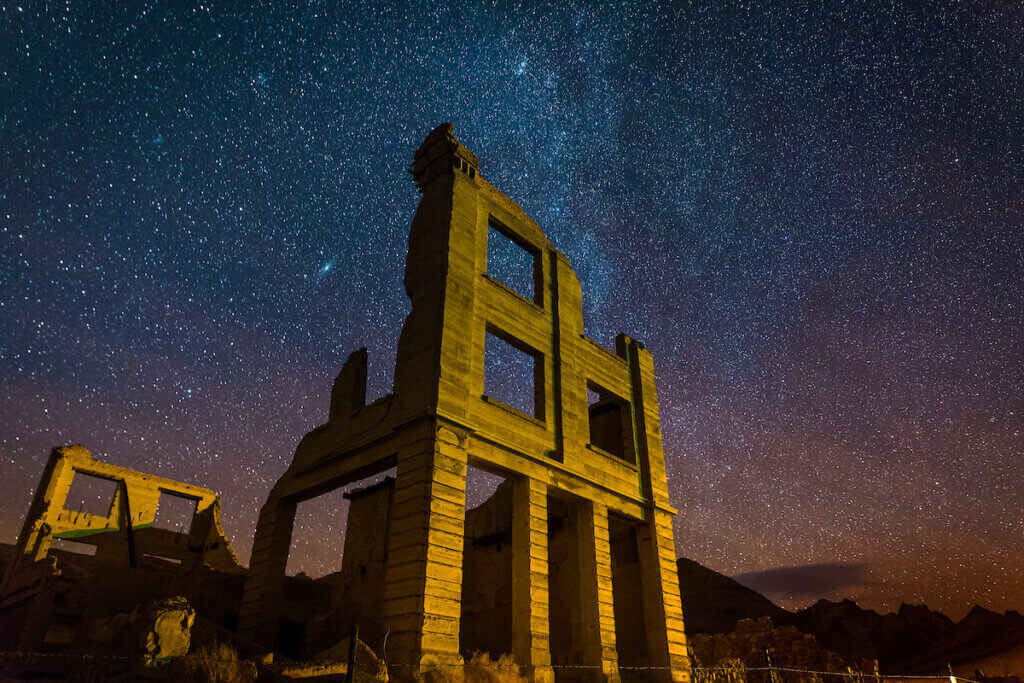
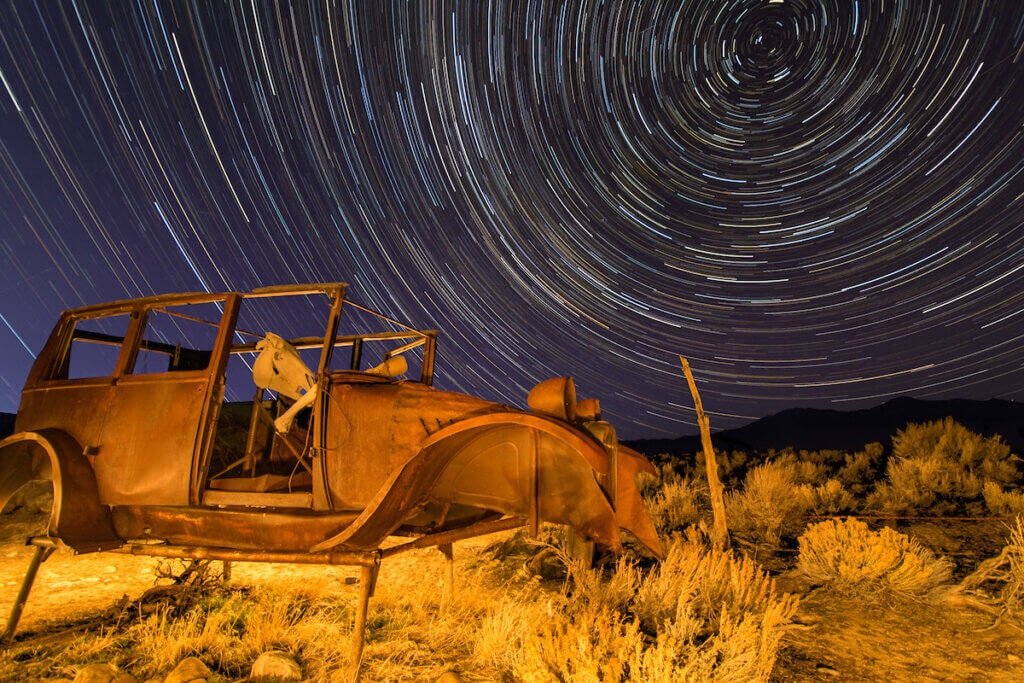
Stay for the Afterparty!
While the main event is rather short-lived, no matter which locale you head to see the annular eclipse, you gotta stick around. Not only does Nevada fall right into the path of the annularity, we also have some of the darkest skies in the lower 48. Come for the eclipse, spend the day searching for ghost towns or discovering the local history, then head outside the city lights for the best view of the galaxy.
Great Basin National Park and Ely are right in the annular solar eclipse’s path, but on any given day they are huge draws for viewing pristine nighttime skies. Every town on this list, in fact, is within a very short drive of some sublime darkness, thanks to the lack of light pollution.
Get Inspired
Related Stories
